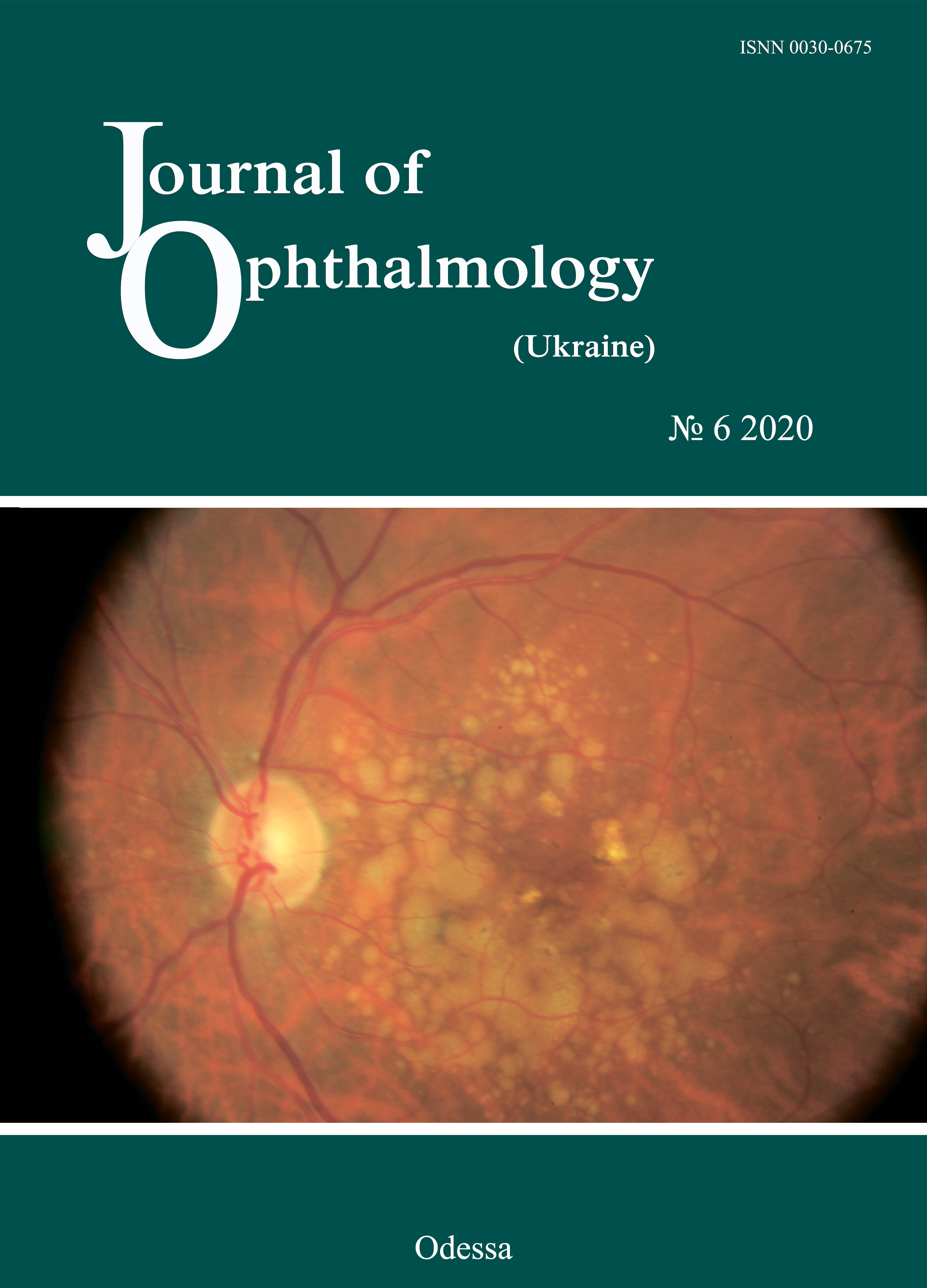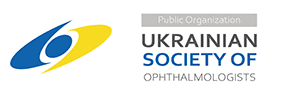Response of soft tissues and abdominal organs of rabbits and rats to implanting albucid-containing cross-linked polyurethane composite
DOI:
https://doi.org/10.31288/oftalmolzh202063037Keywords:
сітчастий поліуретан, альбуцид, імплантація, реконструктивні операції на органі зору, гостра системна токсичність, локальні ефектиAbstract
Background: Craniofacial injuries represent 29% of all trauma cases, and patients need to have their affected orbit, orbital adnexa, and periorbital area surgically reconstructed or restored. However, the outcomes of these procedures depend also on the quality of implant materials. Previously, we have developed a polymer material made of cross-linked polyurethane (PU) and containing a biologically active substance, albucid; it seems to be a promising implant material.
Purpose: To investigate experimentally the response of soft tissues and abdominal organs of animals (rabbits and rats) to implanting the albucid-containing cross-linked PU composite.
Material and Methods: Assessment of soft tissue response to implantation of the synthetic polymer material. The skin response to implanting the albucid-containing cross-linked PU composite was assessed through the intracutaneous injection of the extract of the test material in rabbits. The soft tissue response was assessed through subcutaneous implantation of cross-linked PU composites in Wistar rats. The response of abdominal organs to implanting the cross-linked PU composite was assessed through the intraperitoneal injection (20 ml per kg body weight) of the extract of the test material in Wistar rats.
Conclusion: The intracutaneous injection of the extract of the test material caused neither erythema nor edema in rabbits, and the test sample of the albucid-containing cross-linked PU composite was considered non-irritating, since a difference between the average scores for the test extract and control extract (i.e., a value of the primary irritation index) was of 0 to 0.4 points. Over the period of observation of potential acute systemic toxicity, no animal injected with the extract of the test material (the albucid-containing cross-linked PU composite) displayed higher biologic response than animals injected with the control extract, and the test sample of the albucid-containing cross-linked PU composite conformed to the requirements of tests for systemic toxicity. This study demonstrated a natural process for a foreign body residing in the body (gradual foreign body separation from the surrounding tissues due to formation of a connective tissue capsule) after implantation of the samples of cross-linked PU composites in animal bodies. The cellular responses were (1) typical for a living body response to the presence of a foreign body at the site of implant placement and (2) characteristic for aseptic inflammation. The test samples produced moderate irritation when placed into the animal’s body.
References
1.Grusha OV, Grusha IaO. [Five Hundred Orbital Plastic Repairs: Analysis of Complications]. Vestn Oftalmol. 2006;1:22-4. Russian.
2.Gundorova RA, Neroiev VV, Kashnikov VV. [Eye injuries]. Moscow: GEOTAR-Media; 2009. Russian.
3.Lowery J, Carlson AN, Abelson MB, et al. 2001 year in review. Rev Ophthalmol. 2001; 8(11):73-87.
4.Grishina NI, Fedorischeva LE, Kolbenev IO. Traumatic orbital injuries, the methods of diagnosis and treatment. In: Brovkina A, editor. Collection of research papers "Diseases, tumors and traumatic injuries of the orbit". Moscow; 2005. p. 87-90.
5.Astakhov YuS, Nikolaenko VP, D'yakov VE. [Use of polytetrafluoroethylene implants in ophthalmic surgery]. St Petersburg: Foliant; 2007. Russian.
6.Galatenko NA, Kuliesh DV, Maletskyi AP, Karpenko OS. Soft-tissue response to synthetic polymer implants made of cross-linked polyurethane and containing a biologically active substance, albucid or dacarbazine, in animals. J Ophthalmol (Ukraine). 2018;6:52-8. https://doi.org/10.31288/oftalmolzh201865258
7.Karaian AS. [One-stage repair of traumatic defects and deformations of the chhekbone, nose, and orbit complex]. [Dr Sc (Med) Dissertation]. Moscow: Central Research Institute for Dentistry and Maxillofacial Surgery; 2008. Russian.
8.Krasilnikova VL. [Foamed ceramics- and hydroxyapatite-based ocomotor stump of the ocular prosthesis (experimental study)]. [Cand Sc (Med) Thesis]. St Petersburg: Russian Medical Academy of Postgraduate Education; 2002. Russian.
9.Maletskyy AP, Zubok DI. [Possible surgical approaches to the treatment of trauma and tumors of the eyelids, orbit and oculoorbital area]. In: Proceedings of the Ophthalmology Conference on the Occasion of the 80th Anniversary of the Ukrainian Society of Ophthalmologists. September 12-13, 2018, Vinnytsia. P. 11-3. Russian.
10.Hintschich C. [Dermis-fat graft. Possibilities and limitations]. Ophthalmologe. 2003 Jul;100(7):518-24.https://doi.org/10.1007/s00347-003-0846-7
11.Galatenko NA, Rozhnova RA. [Biologically active polymeric materials for medicine]. Kyiv: Naukova Dumka; 2013. Russian.
12.Rozhnova RA, Shilov VV, Galatenko NA. [Structural and morphological studies of biologically active implants with prolonged healing action]. Kompozitsiini polymerni materialy. 2000;22 (2): 146-50. Russian.
13.Lipatova TE, Pkhakadze GA. [Polymers in endoprosthetics]. Kyiv: Naukova Dumka; 1983. Russian.
14.European convention for the protection of vertebrate animals used for experimental and other scientific purposes. Council of Europe, Strasbourg; 1986.
15.Maletskyy AP, Dubkova VI, Maievskaia OI, Bigun NM. [Results of the use of polymer composite Ikvoban in reconstructive surgery of the orbit and oculo-orbital region]. Oftalmologiia. Vostochnaia Evropa. 2013;special issue:188-97. Russian.
16.Sarkisov DS, Petrova YuL. [Microscopic technique]. Moscow: Meditsina; 1996. Russian.
Downloads
Published
How to Cite
Issue
Section
License
Copyright (c) 2025 Н. А. Галатенко, Р. А. Рожнова, Д. В. Кулєш, Т. В. Віслогузова, А. П. Малецький, Н. М. Бігун

This work is licensed under a Creative Commons Attribution 4.0 International License.
This work is licensed under a Creative Commons Attribution 4.0 International (CC BY 4.0) that allows users to read, download, copy, distribute, print, search, or link to the full texts of the articles, or use them for any other lawful purpose, without asking prior permission from the publisher or the author as long as they cite the source.
COPYRIGHT NOTICE
Authors who publish in this journal agree to the following terms:
- Authors hold copyright immediately after publication of their works and retain publishing rights without any restrictions.
- The copyright commencement date complies the publication date of the issue, where the article is included in.
DEPOSIT POLICY
- Authors are permitted and encouraged to post their work online (e.g., in institutional repositories or on their website) during the editorial process, as it can lead to productive exchanges, as well as earlier and greater citation of published work.
- Authors are able to enter into separate, additional contractual arrangements for the non-exclusive distribution of the journal's published version of the work with an acknowledgement of its initial publication in this journal.
- Post-print (post-refereeing manuscript version) and publisher's PDF-version self-archiving is allowed.
- Archiving the pre-print (pre-refereeing manuscript version) not allowed.












